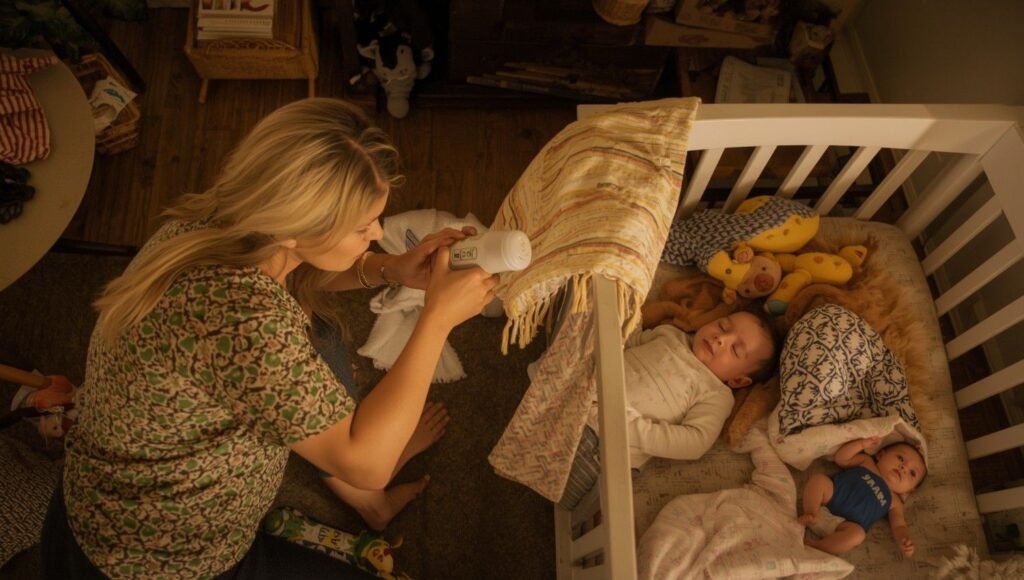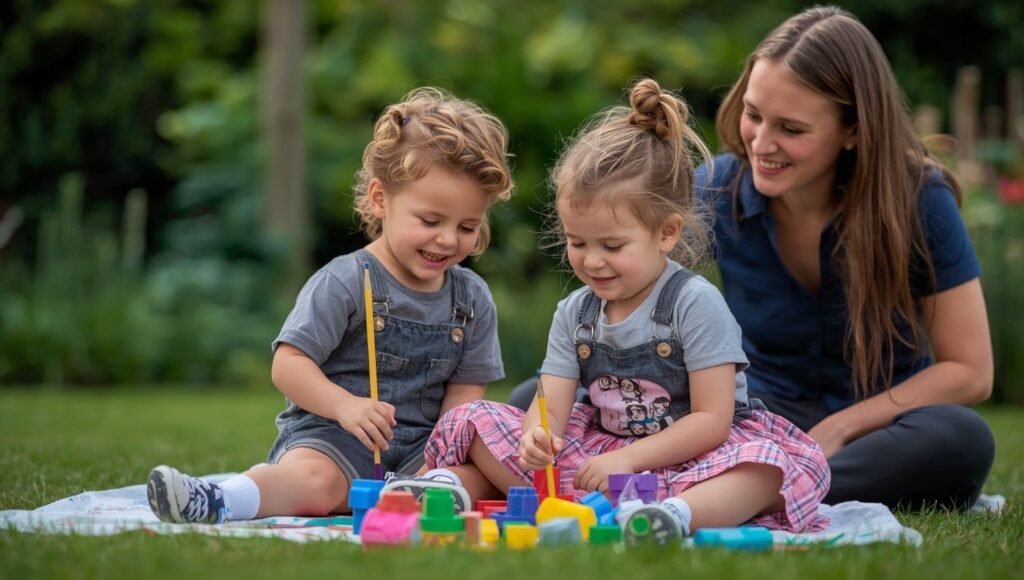Introduction
When I first learned I was expecting boy-girl twins, it felt like stepping into a world of discoveries and questions I never knew existed. The realization came with a swirl of emotions—fascination, anxiety, and deep anticipation. Suddenly, our family began to adapt to a new dynamic that felt double in every way—double diapers, double hugs, and double the challenges too. Yet, behind the chaos, there’s an extraordinary sense of kinship that these twins share, so different from that of singletons or same-sex siblings.
As both a parent and someone curious about science, I’ve learned that medical research, developmental psychology, and real-life strategies help demystify the journey. Understanding what supports their health, emotional well-being, and overall flourishing turns the daily routines into something deeper—an art of balance. It’s about watching patterns align, not through perfection, but through patience, where the beauty lies in nurturing two individuals growing side by side.

The Difference Between Identical and Fraternal Twins
As someone who’s spent time learning from health care professionals and real family experiences, I’ve seen how understanding identical and fraternal twins can make parenthood feel less mysterious. Fraternal or dizygotic twins form when two separate eggs are fertilized by different sperm, each developing in its own amniotic sac, placenta, and supporting structures. In contrast, identical or monozygotic twins begin from a single egg that divides, meaning they share the same DNA and chromosomes—XY for a boy, XX for a girl—depending on genetics.
While some laboratories offer DNA collection kits for a fee, helping families identify whether twins are same-sex or not through ultrasound, membranes, and delivery findings, true confirmation often comes from examining each child’s child’sgenes. Even identical twins can appear different due to environmental effects—womb position, early life experiences, or even small stitches from a lacerated lip that distinguish one brother from the other. As time passes, tiny bumps, bruises, hairstyles, and DNA stretches adapt in response to their surroundings, making each child distinctive, unique, and beautifully separate individuals.
What Makes Boy-Girl Twins Unique: Behind the Science?

As a parent, watching boy-girl twins grow together feels like witnessing a quiet miracle of science. They’re unique, different, yet deeply bonded. Their story begins with two separate eggs, fertilized independently by two sperm, creating fraternal twins who share only about half their DNA, much like siblings born years apart. Molecularly, the chromosomes tell the tale—XY for the boy, XX for the girl—and this chromosomal divergence sets distinct pathways for growth, metabolism, and sensation of taste and temperature, shaping their different worlds.
Sometimes, phenomena like sesquizygotic twinning, where one egg is simultaneously fertilized by two sperm, or chimerism, where embryos blend within the body, remind researchers that biology doesn’t always follow textbook rules. Such cases challenge the norm and occasionally involve monozygotic twins with differing sexual anatomy due to mosaicism in their chromosomes, requiring individualized medical follow-up and compassionate support. Yet, for the majority, boy-girl twins remain a quintessential example of genetic diversity in twinning—a living symbol of nature’s balance between unity and difference.
Medical Insights: Pregnancy, Risks, Genetics
Every stage of pregnancy with boy-girl twins brings unique medical insights and careful attention from parents and doctors. Most fraternal twins grow in separate placentas and amniotic sacs, a dichorionic and diamniotic configuration that lowers risks like transfusion syndrome, which can affect identical twins sharing a placenta. Continuous clinical monitoring, frequent ultrasounds, and tracking growth and uterine activity help detect complications early. Prematurity is more common in twin pregnancies, with birth often happening a few weeks early, but proper surveillance ensures these can be managed well.
The scientific community continues to study factors that influence the likelihood of having twins—maternal age, family history, ethnicity, populations, and even diets or fertility treatments. Each embryo’s journey diverges from conception, shaped by genetics and the environment, yet every outcome feels personal. I’ve seen families find comfort in understanding these patterns—it replaces fear with confidence, reminding them that twin pregnancy is not just a medical event, but a shared, evolving story of resilience and connection.
From Ultrasounds to Birth: What to Expect with Boy-Girl Twins

The path from early ultrasounds to birth is both demanding and deeply rewarding for boy-girl twins and their families. Regular check-ups every few weeks, along with Doppler studies, growth scans, and blood pressure readings, become part of the routine during pregnancy. When babies show good head-down positioning and steady heart rates, a vaginal delivery may be possible. Still, flexibility is key—a cesarean section might be needed depending on presentation or unexpected complications. Delivery teams prepare with precision to keep newborns safe and responsive in those crucial first moments.
Afterward, postpartum adjustment sets its own rhythm—constant feeding, monitoring weight curves, and adapting to subtle cues. Each transition to the outside world is different, and pediatric follow-up with timely interventions prevents issues if growth falters. With gentle adaptation, supportive routines, and attentive parenting, families discover that even the busiest days bring quiet moments of joy, where love finds balance between structure and spontaneity.
Daily Life: Feeding, Sleep, and Promoting Autonomy
Daily life with boy-girl twins revolves around coordinated feeding, much-needed sleep, and gradually promoting their autonomy. Finding balance means letting routines guide the day without losing flexibility or warmth. Every moment—whether it’s feeding time, bedtime, or a shared laugh—becomes part of a rhythm that nurtures confidence and independence for both twins and parents alike.
Feeding Rhythms and Nutrition
Every parent of boy-girl twins soon learns that feeding can feel like solving a puzzle—one twin may latch easily, while the other prefers the bottle. These transitions are guided by hunger signals, temperament, and subtle cues that vary from child to child. Whether it’s breastfeeding or introducing solids, tuning into developmental signs instead of comparing progress builds confidence and strengthens their individuality. I’ve seen how environments that support calm feeding and a steady pace nurture not just growth, but connection.
Synchronizing Sleep—Or Embracing the Chaos

Parents of twins quickly discover that synchronizing sleep often means learning to embrace a little chaos. Nights may bring yearning, laughter, and plenty of unpredictable awakenings. Following recommendations for safe sleep spaces reduces the risk of infant death syndrome (SIDS), while gentle soothing, calm routines, and individualized approaches—perhaps a soft light or quiet lullaby—promote safety, emotional stability, and rest for everyone. Each twin’s rhythm eventually finds balance when met with patience and flexibility.
Dressing, Naming, and Celebrating Uniqueness
Choosing how to dress your boy-girl twins can spark reflection on identities and individuality. Research and clinical experience suggest that clothing, naming, and celebrating each child’s uniqueness foster strong self-esteem. Encourage family, teachers, and siblings to use each child’s name rather than referring to them as “the twins.” In my own practice, this shift nurtures each child’s identity and helps shape a balanced twin dynamic built on confidence and respect.
Room Layout and Personal Space
Designing a room for twins means balancing personal space and shared play. Creating separate territories—their own beds, color accents, and organized storage—helps define boundaries while maintaining a warm environment. Thoughtful décor that reflects individual preferences promotes emotional autonomy and makes each child feel secure. When the layout supports both connection and independence, harmony naturally follows.
Managing Family Logistics
Managing family logistics with twins is a test of organization, delegation, and creative problem-solving. As children multiply, parental capacity must stretch—using planners, meal prep, and chore charts can distribute responsibilities fairly. Support from healthcare professionals strengthens resilience and ensures clear boundaries for everyone. Over time, these skills turn everyday chaos into coordinated calm, proving that balance is built, not found.
Developmental Milestones and Growth: Fairness vs. Individuality

Tracking developmental milestones and growth in twins demands fairness—but also respect for individuality. Comparing progress can create pressure, while recognizing each child’s unique rhythm celebrates their personal path.
Genetics, Morphology, and Puberty Timing
Every twin’s journey through growth tells a story shaped by genetics, morphology, and puberty timing. Twins often differ in rate or onset—girls may show sexual characteristics earlier than boys. Pediatricians rely on charts, percentiles, and velocity measures such as weight-to-length ratios to spot patterns. Open conversations ease anxiety and give children clarity about these natural changes, making them feel secure in their developing identities.
Cognitive, Social, and Emotional Growth
The science of twin relationships shows that cognitive, social, and emotional growth is a rich blend of intimacy and gentle rivalry. Their influences—from family, peers, and culture—shape how twins play, learn language, and explore activities or sports. Biology sets the base, but expectation, curiosity, and competition drive independence and intelligence. As they grow, nurturing affection, differentiation, and self-confidence through communication and fair negotiation builds emotional maturity.
Navigating Identity and Social Perceptions
Navigating identity and social perceptions starts early for siblings who share everything from birth. At the beginning, some face stereotyping at school, from relatives, or peers, questioning their gender roles or closeness. Gentle discussions at home teach fairness, respect, and empathy. When rivalry or distress appears, consulting a psychologist ensures a compassionate, evidence-based path forward, helping them grow with confidence and understanding.
Myths, Cultural Perspectives, and Celebrating Twinhood
Despite myths in popular culture about mystical twin bonds, science shows that boy-girl twins are as unique as any siblings. Across communities—from the Yoruba of Nigeria to Western societies—narratives and rituals reflect both difference and unity. These traditions remind family members to take pride in individuality while cherishing connection. Embracing such cultural perspectives keeps the celebration of twinhood meaningful and inclusive.

Key Takeaways
Boy-girl twins represent a living masterpiece of genetic difference and emotional closeness. Their life may start with separate genetic codes, yet they grow by sharing a daily tapestry of experience. Continuous medical follow-up through growth charts and pubertal milestones ensures each child’s unique needs are met.
A strong family organization built on flexibility, respect, and open communication supports a healthy twindynamic. Through planning, delegating, and seeking support, families create household harmony and effective coping. Access to reliable pediatric resources and professionals—along with personalized traditions, honest dialogue, and meaningful experiences—helps both siblings flourish. Parents using the Heloa app for advice, questionnaires, or tailored support find reassurance at every step of their parenting journey.
Questions Parents Ask
1-Can boy-girl twins be identical?
Boy-girl twins are almost always fraternal, meaning they develop from two separate eggs fertilized by two different sperm cells. This is why they share roughly 50% of their DNA, just like any other siblings. In extremely rare cases, chromosomal variations or mosaicism can result in twins with differing sexual anatomy who appear identical—but these occurrences are truly exceptional. For nearly all families, boy-girl twins are simply fraternal twins born at the same time.
2-How do boy-girl twins occur?
Boy-girl twins result when a woman releases two eggs simultaneously, and each is fertilized by a different sperm. This process leads to fraternal twinning, where the children are genetically similar to regular siblings but share a unique prenatal environment and birth date, deepening their bond. While there’s no direct genetic link to one parent, factors like maternal age, family history, and fertility treatments can slightly raise the likelihood of conceiving boy-girl twins.
3-Are there any unique challenges in raising boy-girl twins?
Raising boy-girl twins brings both special joys and distinct challenges. Parents may observe differences in temperament, behavior, or interests, and sometimes face social stereotypes about gender roles. The key lies in honoring each child’s individuality—supporting their unique needs while encouraging a strong sibling connection. Every twin pair has its own rhythm and story, and seeking guidance or community support along the journey fosters confidence, harmony, and resilience in family life.

